Who Am I And Who Are You?
Excerpt
The Who Am I And Who Are You? project aims to raise awareness that a lot can be done to improve the quality of the Dutch secondary education system in terms of creating a sense of belonging in all their students, just by showing this at a secondary school. The most successful systems, according to PISA, have a broad scope on talents and, therewith, encourage students to develop "soft" qualities like creativity, affinity etc. This is not always the case in the Dutch school system, where mostly "hard" (measurable) knowledge and skills are emphasized.
After a detailed comparison of the Dutch, British and Finnish systems, a list of improvements was made and implemented at Bindelmeer College, a highly diverse secondary school in Amsterdam. This pilot consists of a project week with exhibitions and preparations for this week, and comes up with recommendations for the future.
Narrative, origins and objectives of the initiative
What kind of project is this? Please give a short description (summary) of it.
Looking at the results of the Finnish and English secondary education systems (with excellent PISA-scores), this project attempts to come up with recommendations to improve the quality of the Dutch secondary education system likewise, but in a Dutch context. After a detailed comparison of the three aforementioned systems, a list of improvements was made and implemented at Bindelmeer College, a highly diverse secondary school in Amsterdam. This experiment will be upscaled and expanded in the near future; this pilot consists of a project week with exhibitions, and preparations for this week.
The most important recommendations refer to a broad scope on talents that students possess (educational institutions should be looking at test-based results, but also at less-measurable qualities like creativity, affinity etc.) and that curriculum development should be done by teachers as much as possible (within clearly defined general guidelines from the national government), aimed at realizing personalized education and creating self-made lessons.
Please tell us why, in general, this project is considered a successful one?
While this project is still in its pilot phase, it already shows promising results. The project is very interactive; a “positive space for a wide range of cultures to connect, share and converse” was created. Staff, teachers and students were positive about it and would like to repeat/expand it in the future. Teachers observed a change in their students' behavior: they were more positive, energetic and responsible. Students liked their tasks; they felt empowered to show and improve their talents during the week and felt good and proud about themselves.
And why would you consider it a grass-roots initiative?
The project was implemented at a secondary school in a very diverse area of Amsterdam; the curriculum was developed and created together with staff and students.
What challenges needed to be solved in this project?
The challenge is to create a truly inclusive curriculum (and school), as well as a safe leaning environment in which there is (also) room for translating knowledge and recommendations into everyday practice in a playful, interactive way.
Is this initiative based on any particular theoretical framework? Which one?
The initiative is based on results from a literature review:
Reaping the benefits of education across the border. A comparison between the Dutch, Finnish and English secondary educational system.
Different researches (theorethical and empirical) where used and described to come to the conclusion and results.
(Appendix) Is your intervention standing on its own or is it a part of a bigger and more holistic approach?
The initiative forms part of a more holistic approach: Different subjects, skills and talents from different individuals and cultures come together. Knowledge that was gained during the project is also applicable to other projects during regular school weeks.
Please describe the group(s) intended as beneficiaries of this initiative
Why has this group (have these groups) been chosen?
Bindelmeer College has a highly diverse student population; it mirrors this part of Amsterdam. Offering these students an appropriate learning environment (and facilitate teachers to do so), considering their needs and talents, is the main focus of this project.
Could you please tell us something about the relative size of the (of each) target group, within the school/university population, region and/or country?
Cultural identity is an important aspect within the school population. The four biggest cultural groups at Bindelmeer College have their roots in Surinam (due to the colonial history of The Netherlands, Amsterdam has a large Surinam community), Latin-America, Africa and Asia. Exact numbers and percentages were not available.
Which social characteristics are taken into account and what is the geographical area covered?
Because of the different cultural groups and the theme Inclusive Education, the social characteristics of the different cultures formed part of the content of the project itself, for example cultural aspects.
On which level is the project implemented?
The project was implemented at ‘staff’ level, therefore management, teaching staff and students were involved.
Please describe the political and socio-economic factors that you believe have been important enablers for your initiative
Did the initiative have political support?
The initiative was related to the institution (school), because project-based education needs to become a bigger part of the curriculum in the future of the school. Project-based learning is also upcoming/existing at other schools all over the country but is (not yet) obligated/part of the regular school curriculum in the Netherlands.
How did it fit with local, regional or national policies?
The project took the space to create a different way of teaching, within the national guidelines for education in the Netherlands. Also, the curriculum that’s obligated for different subjects nationally was covered in the teaching module that was specially created for this project. Locally, the neighborhood got involved and the different cultures formed a big part of the content of the project itself.
Who are the stakeholders supporting the initiative?
The school board supported the initiative, but no external stakeholders were involved.
Are there particular demographic changes present that are influencing the project?
There aren’t any particular demographic changes that influenced the project. But the school stands in a highly diverse area of Amsterdam, so the many different cultures influenced the project.
What is the institutional strategy and culture of the (educational) organization?
The school is modernizing, technically - by spending more money on ICT lessons for example - but also socially, by taking on projects and initiatives like this. The school wants to be an inclusive learning community and aims to offer a safe learning environment to its student population, teachers and other stakeholders.
To what extent does the initiative have an influence on institutional policy (or potential influence) of the (educational) organization?
The initiative influenced the school program for next season, it became a regular part of the year program/curriculum and the project will be expanded.
(Appendix) Is there public support for your initiative and the issue it addresses?
The school supports the initiative. Politically it should have support as well since the Dutch and local (big city) governments want to see some change in the years to come. Initiatives like this will fit perfectly in the standards for education in the future.
(Appendix) What other factors do you think have been important for the success of this initiative?
The most important factor was teamwork and commitment between the teachers and other colleagues.
Please describe the overall initiative design and the methods and tools used to reach the goals
Please describe the specific activities carried out.
The project ‘Who am I and who are you?’ was spread over a time period of six weeks.
The first weeks were used to gather the team, have meetings and explain what the project is all about. Also, the teachers provided classes from different subjects for a module. The following list was implemented:
- The main theme is the ‘Multicultural Society’.
- The weeks before the project week, teachers will already introduce their students to the theme by self-made lessons to provide them with information about the subject in a playful way.
- Subjects involved in the project are Dutch, math, art education (dance, music, fine arts, theater), ICT, social studies, cooking classes, sports classes and mentor classes.
- The backgrounds of the students themselves are of main importance. They get personally involved during the classes and can give input to their classes by sharing their stories.
- In the project week itself all students will be mixed and parted from their own class, so they can meet and get to know their other fellow students as well.
- The normal timetable falls away and teachers will work cross-sectional.
- Besides plenary meetings and activities students can work on a self-chosen task too.
- Tasks can be (among other things): interviewing people on the street about backgrounds, and making a 'vlog' about it, making an art performance with “worldwide” influences or taking care of publicity for the project week.
- At the end of the week all tasks come together in an exhibition, a diversity of subjects, skills, learning levels and cultures.
What were the key roles (teacher, student, management team etc.) within the project?
- The project team existed of twelve people.
- There was one initiator who was also the project manager, with one sparring partner (second project manager). Tasks include: making schedules, organize meetings, putting together the module and lessons, taking care of the budget, etc. This was new (and exciting) to them, since they are both teachers and therefore they were not used to being managers.
- The project was executed with first year students, about 110 in total. Mentors became their main teacher for the week, and teach classes from the module themselves.
- There were guest teachers with a specialization (for example dance, spoken word, etc.).
- The official team manager was there to fill in the gaps when necessary.
- All teachers, managers, students, guest teachers, assistants, etc. gave input for the content of the project.
What ideas, tools, theories, models, methodology (etc.) have been used to reach the goals?
The project is based on the Finish educational system, but it is adapted to the Dutch system.
The inspiration came from the research paper: Reaping the benefits of education across the border. A comparison between the Dutch, Finnish and English secondary educational system.
The conclusions led to recommendations, the recommendations were translated into practical actions by the initiator. A model used to translate knowledge into everyday practice is based on the model for sustainable quality improvement in nursing and care-giving, ZonMw (2016).
What are the final revenues of the project?
As already mentioned: while this project is still in its pilot phase, it already shows promising results. The project is very interactive; a “positive space for a wide range of cultures to connect, share and converse” was created. Staff, teachers and students were positive about it and would like to repeat/expand it in the future. Teachers observed different behavior in their students than usual: more positive, energetic and responsible. Students liked their tasks; could show and improve their talents during the week and felt good and proud about themselves.
Please describe if your project ensured its sustainability
If so, how did you ensure the short-term impact of the project?
The project team got very involved. When necessary, they will be able to carry out the project next year by themselves. Also, the project doesn’t need big changes, it’s a project that can be used more than once.
And how did you ensure the long-term impact of the project?
This has to be explored in the future. As the project will be executed again in the following year, evaluation is expected to cover a longer time horizon next year.
Has your project been replicated elsewhere?
Since it’s a pilot, not yet, but it is to be expected.
Please tell us about the resources used in this initiative
What was the budget for the initiative?
This was a low-budget initiative; it cost about €1000,- for activities (museum, food) plus guest teachers and working hours from the staff (about 12 people during one week).
How much did the initiative depend on volunteers?
The whole project wouldn’t exist without volunteers to create the project. The initiator didn’t get paid.
How were the costs perceived by the public/the sector/other stakeholders?
No problems here, since the costs were very low.
To what extent did the initiative achieve its objectives?
Please describe the evidence to support the success of your initiative.
The fact that the project, while it is still in its pilot phase, became part of the regular curriculum means it’s a success. As said, the school wants to continue the project and is looking for ways to expand it, ‘flip the classroom’ and modernize it.
Did the intervention lead to any unintended (positive) outcomes?
Yes, it was a surprise for the whole team to see the students this way. "We didn’t expect them to be so involved as they were." Also, students were on time during the project week and even wanted to stay longer to finish their tasks (which is not always the case in usual school life).
What indicators (quantitative and qualitative) have you measured to demonstrate success?
Since the project was a pilot, there was only qualitative measuring. The project leader used individual interviews, group talks, observations and evaluation to measure the success. Outcomes were very positive, because everybody involved wants to be part of the team next time again.
(Appendix) How did you evaluate/monitor this intervention?
The goal of the project was to achieve a feeling of inclusiveness; everybody (students, teachers, staff) should have a feeling of responsibility but also a feeling that they could contribute something to the project. This goal was achieved. Students were interviewed and evaluation took place every morning and afternoon during the execution of the project with the project team. Findings and comments were gathered and recorded.


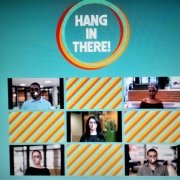
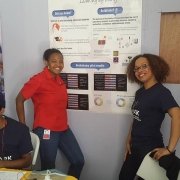
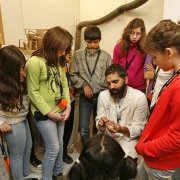
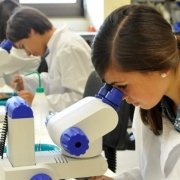
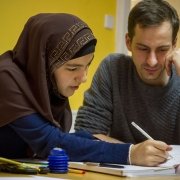
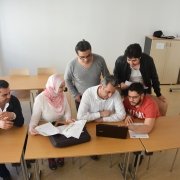 Copyright: Camilla Pellech, Postgraduate Center der Universität
Copyright: Camilla Pellech, Postgraduate Center der Universität

 Copyright: Camilla Pellech, Postgraduate Center der Universität
Copyright: Camilla Pellech, Postgraduate Center der Universität